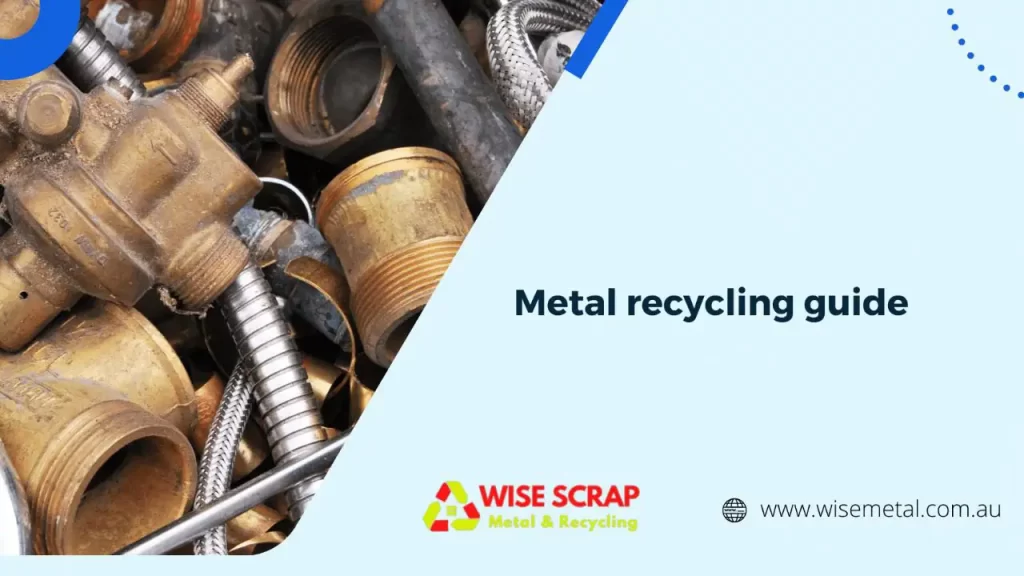Metals are used in almost everything, from manufacturing the aircraft body to the jewelry people wear. Yes, the only difference is in the chemical and physical properties of the metals. These cannot be degraded by any means. if you try to heat the metals, they will melt to form liquid once their boiling is reached.
Therefore, the only option to reduce the amount of waste metal and keep the environment clean is to recycle the metals. Recycling metals has become a hype in the market as it is widely practiced across all countries and industries. But the process is not as easy as you think. There are several constraints that one needs to be aware of prior to recycling the metals.
Keeping this in mind, we have created a guide for recycling metals in a productive manner.
Benefits of recycling the metals
It is crucial to learn the importance of recycling metals to get the process done and understand why so many companies and industries are focusing on this process. In this below section, we have listed some of the significant benefits of metal recycling.
- Metal recycling reduces the waste generated every year. Tones of scrap metals are collected from dumpsters across countries. If these are reused, the volume will gradually decrease, keeping the environment clean and safe.
- Since metals are non-biodegradable, adding them to landfills is no point. If they are added to landfills, they will cause pollution and make the soil toxic or alter the pH balance. This is why recycling the metals sounds more feasible.
- Also, the cost of creating new metal products is relatively high. But if the metal scraps are used, there won’t be so much of costs involved because one can skip the fabrication or extraction part.
- Metal is a non-renewable resource. It means that the reserves, once exhausted, won’t be replenished. Currently, the extraction rate is so high that governments of many countries have already reported the borderline existence of some precious metals. This is why recycling metals will burden the extraction and mining industry less, ensuring the reserves are conserved for the upcoming generations.
- While extracting the metals from the ores in factories, smoke is emitted into the air and several other harmful gasses. Hot water is released into the water bodies causing thermal pollution. Therefore, with metal recycling, pollution can be controlled at different levels.
A step-by-step guide to recycling metals
The metal recycling process is not as easy as it sounds. Therefore, knowing the process step-by-step is crucial so that you can succeed in the same. We have discussed the entire procedure for your better understanding and clarification.
Collection and sorting
The first step is to collect the scrap and unused metals from different areas. There are scrap metal companies from where you can collect the raw materials. You also need to sort the collected metals. For example, if you have bought one kilogram of unused iron, there will be different types of iron. you need to sort them based on their chemical and physical properties.
Processing
The sorted metals are put under a hydraulic press to reduce the size and volume in this step. They are either squeezed and rolled or flattened to reduce their space occupancy.
Shredding
As the name suggests, shredding means cutting processed metals into smaller parts or sheets. The metal pieces have a larger surface area but minimal volume in this case. This makes the melting process much easier because it does not take too much energy to melt tiny metal sheets compared to big chunks.
Melting and purification
Melting of the metals takes place in large furnaces. The temperature is set at the melting point of the metal concerned. Sometimes, pressure needs to be adjusted to speed up the melting process. Also, in some cases, catalysts are used to speed up the reaction. Once the metal is melted, it is sent for purification. Several methods are implemented for purification, out of which electrolysis is preferred.
Solidifying the metals
The last step includes the solidification of the purified metals. The molten metal is poured into molds and kept at a temperature where it will solidify without any structural deformation.
Conclusion
Since you know the process of recycling metal scraps and the importance of the process, you won’t have any doubts. Metal recycling has proven beneficial because pollution has been reduced significantly. Also, the reserves are not exploited at such a drastic level as earlier.

